The Kennedy Identity: What JFK Learned from 007
A lesson in power dressing, political theater, and the psychology of influence.
“To be treated like royalty, you must act with confidence, but also restraint. A true king or queen never begs, never chases, never loses their composure.”
Law 34: Be Royal in Your Own Fashion: Act Like a King to Be Treated Like One., The 48 Laws of Power by Robert Greene
A series exploring the psychology of personal style
Before John F. Kennedy ever set foot in the Oval Office, he mastered one of the most elusive principles of influence: the art of perception.
At a time when politicians draped themselves in charcoal, Kennedy chose navy.
This wasn’t the blue of boyhood, school uniforms or afternoons spent by the sea, but a deeper, regal hue. A shade that didn’t just stand apart but stood above, signaling a quiet shift in a room full of tradition. At first glance, it seems to be an inconsequential choice. But it wasn’t— it was an ode.
Kennedy had a secret muse.
Not a statesman, not a general, not even a woman.
A spy, who was daring, dashing, charming and in control. A man so compelling that Kennedy, in his own way, sought to become him. The man who captured Kennedy’s attention was Bond. James Bond.
Kennedy was enthralled by Ian Fleming’s creation, devouring the novels with an admiration that went beyond mere entertainment. He was an avid reader of the series, even listing From Russia with Love among his ten favorite books in LIFE Magazine. In the pages of Fleming’s books, Bond’s uniform rarely wavered: a dark blue suit, a black knitted tie and a crisp white shirt. Kennedy read between the lines and realized that in a world of charcoal and gray, a man in color attracts attention.

For years, Kennedy had been dismissed. They called him untested. Not serious. Too young, too pretty. A boy trying to play chess with men.
Suddenly, something changed. Television had overtaken radio as America’s primary source of news. And so, for the very first time, in the first-ever televised presidential debate, John Fitzgerald Kennedy would debate live against Richard Milhous Nixon in Chicago, Illinois. Americans were no longer just listening to their candidates. They were watching them.
Kennedy wasn’t shaken, wasn’t stirred. The silver screen awaited him the way it did his muse— the glow of his sun-kissed skin and carefully applied makeup made his baby blue eyes gleam.
Beside him stood Nixon. He had refused makeup, convinced of its frivolity, and his gray, ill-fitted suit seemed to swallowed him whole. The heat of the lights caused beads of sweat to pool at his hairline, dripping into the corners of his mouth. His five o’clock shadow, barely noticeable in person, appeared harsh under the camera’s gaze, hollowing his face, making him look strained and exhausted.
On September 26, 1960, in front of 70 million Americans, the boy they underestimated was more than one move ahead. That night, it wasn’t a contest of words. It was a test of presence. And America, whether they knew it or not, had just chosen their new leading man.
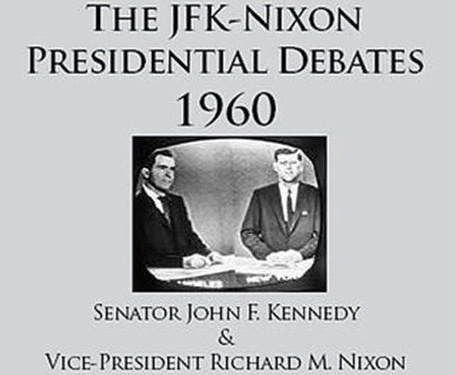

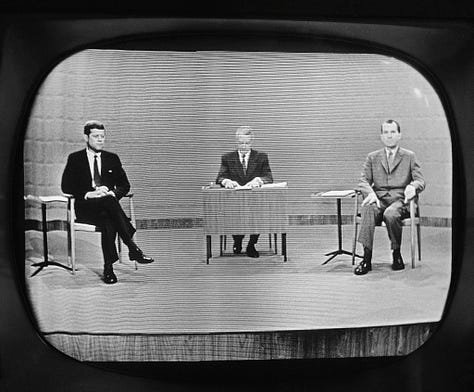
The Psychology of Power: How Kennedy Conditioned the World to See Him as a Leader
Kennedy used three core psychological principles to shape his public image.
Principle 1: First Impressions & The Halo Effect
People make snap judgments in seconds, and The Halo Effect— a cognitive bias studied by psychologist Edward Thorndik— proves that a single strong trait (like an authoritative appearance) influences how all other traits are perceived. This effect played out on national television during the 1960 presidential debate. Nixon, unshaven and sweating under the lights, appeared weak, while Kennedy looked effortless, like a natural.
Interestingly enough…
Studies later showed that those who watched the debate overwhelmingly believed Kennedy had won, while radio listeners (who couldn’t see the visuals) thought the candidates were evenly matched. It wasn’t just Kennedy’s words that convinced America—it was the image he projected. Interesting, no?


Principle 2: Self-Signaling, Dressing for the Role Before He Had It
Research by Drazen Prelec and George Loewenstein on self-signaling suggests that individuals use their own behavior as evidence of who they are, reinforcing their identity through their actions. Kennedy’s commitment to his polished attire, composed body language, and charisma weren’t just external— it was a form of psychological conditioning.
By always dressing with authority, he internalized the belief that he was already the leader America needed. The public never saw him flustered, underdressed, or unprepared. His image remained perfectly consistent, reinforcing the perception that he was in total control.
Principle 3: Reinforcing Perception Through Consistency
A single good impression is not enough— perception must be reinforced over time.
Goffman’s Impression Management Theory states that public figures must maintain a consistent image for their status to remain unchallenged. Kennedy understood this intuitively.
He never broke character— whether he was delivering a speech, debating an opponent, or walking onto Air Force One, he always looked presidential. This level of discipline made his authority appear natural, not manufactured. By the time he took office, the public had already been conditioned to see him as the only logical leader, and they were absolutely thrilled.

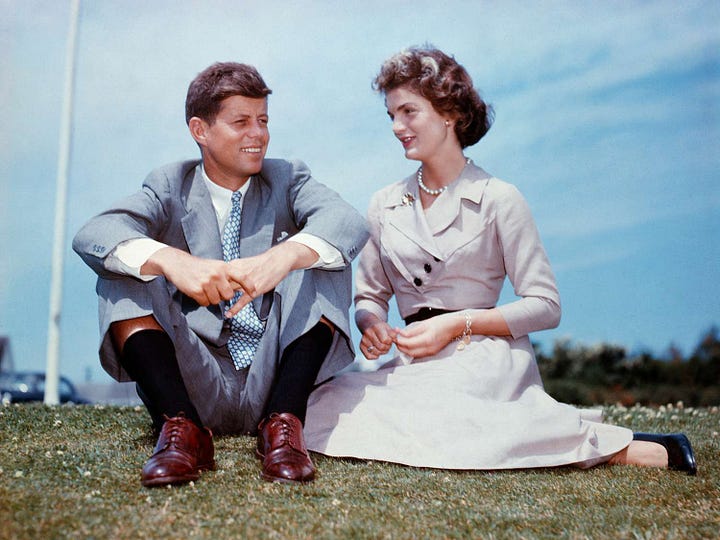
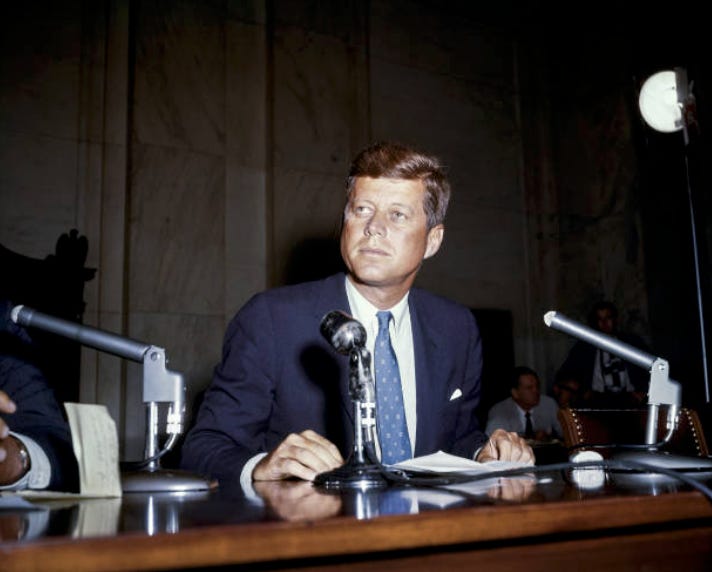
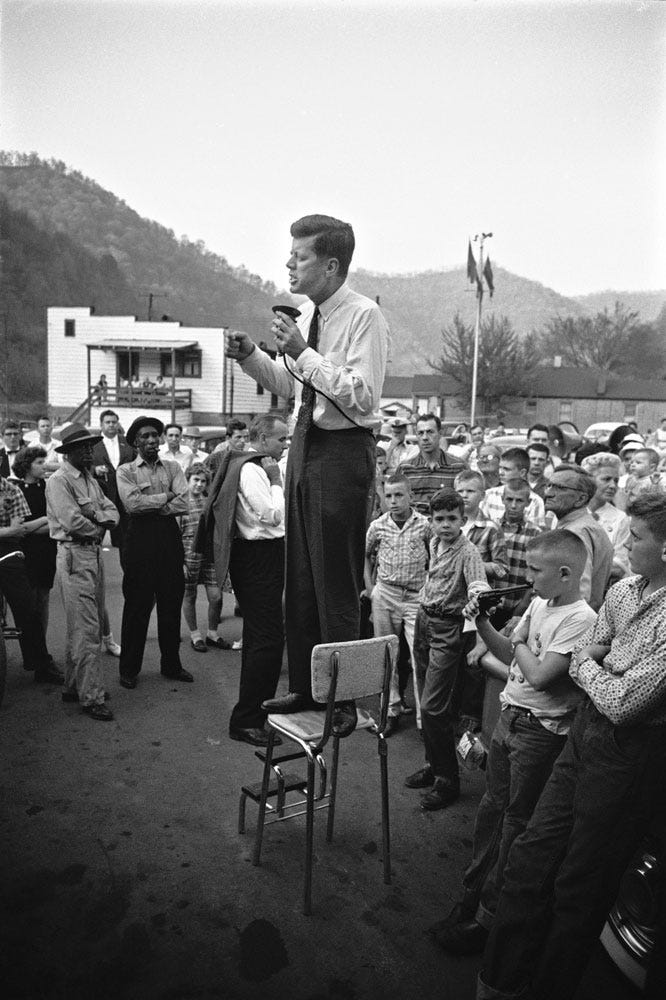
Are You Controlling How the World Sees You?
Or is it the other way around?
You don’t have to be a politician or a CEO to benefit from this question— you simply have to understand how you want to be seen. Whether you want your presence to appear as confident, sophisticated, creative, or influential, the way you present yourself determines how others interact with you.
Use this checklist to evaluate yourself:
1. First Impressions & The Halo Effect: Do You Make an Immediate Impact?
If not, start here:
Upgrade one daily habit: Iron your shirts, polish your shoes, or swap casual wear for more structured pieces to elevate your look.
Practice presence: Make eye contact, stand tall, and speak with intention in every interaction to reinforce confidence.
2. Self-Signaling: Are You Reinforcing the Identity You Want to Own?
If not, start here:
Set a personal dress code: Define 3-5 style principles that align with your desired presence and apply them consistently.
Eliminate clothing that contradicts your identity: If it doesn’t make you feel aligned with the person you want to be, it shouldn’t be in your wardrobe.
Invest in key pieces that elevate your image: Quality shoes, a great coat, or well-tailored basics instantly enhance your appearance and self-perception. Understand that when I say ‘invest’, I don’t mean ‘spend a lot of money’. I mean carefully select.
3. Consistency & Impression Management: Are You Controlling Your Image Over Time?
If not, start here:
Align your digital presence with your real-world image: Update social media, profile photos, and bios to match the persona you want to project.
Create a simple daily ritual for consistency: Whether it’s a morning grooming routine, choosing your outfit the night before, or ensuring you leave the house looking refined, make it habitual.
Surround yourself with reminders of your desired identity: Follow style inspirations, build a Pinterest board, or keep a visual reference of what you want to embody.
Remember: Perception is a mirror— people will treat you the way you treat yourself.
Whether you want to exude confidence, creativity, elegance, or authority, the first step is dressing, acting, and carrying yourself as if you already are that person. If you don’t believe me, go out and try to prove me wrong. I’ll be here, awaiting your findings.
With great personal aesthetic,
Alexandra Diana, The A List
Additional sources: Why Nixon Refused Makeup, The 1960 Presidential Debate,
How to Use Subtle Statements to Amass Great Power
First in a series inspired by The 48 Laws of Power









